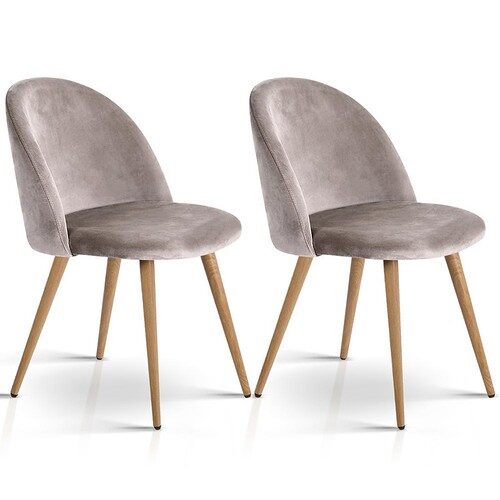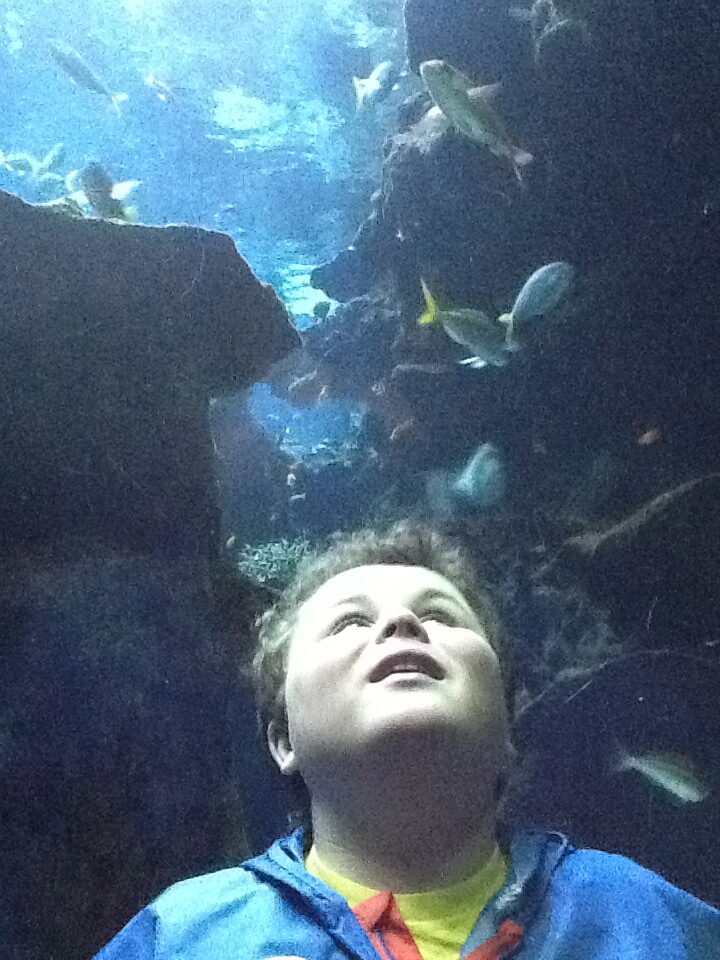Photo © Just Dining Chairs | Flickr / Creative Commons [Two taupe suede dining chair with blonde wood legs on a white background.] TPGA is observing Autism Acceptance Month by featuring accounts from autistic people about the differences accommodations (or lack thereof) make in their lives. Today’s example is from Aiyana Bailin, about how small accommodations changes, in this case choices regarding chairs, can have “huge results.” Aiyana Bailin restlesshands42.wordpress.com Once, at a convention of (mostly) autistic people, I observed a peculiar phenomenon. Chairs were arranged in a large circle, and perhaps 100 attendees gathered and sat. A handful of people, myself included, took their spot in the circle, but sat on the floor in front of their chair, rather than on the chair itself. This floor-sitting evoked no signs of disapproval; after all, most autistic people know that comfort doesn’t come in one-size-fits-all. But I’m used to people being…
Tag: sensory
Lydia Wayman autisticspeaks.wordpress.com I take in a gulp of air and shut my eyes tight before I plunge beneath the surface. One, two, three… It starts to feel like my brain is tingling from the inside. Four, five, six… I’m not counting in seconds, not in minutes, but in hours. Seven, eight, nine… I search for anyone, anything who will ground me through my ever-increasing internal chaos. Ten! When given the cue, I cannot break the surface fast enough, gasping for breath. I’ve done this thousands of times, and yet, after twenty-five years of daily descents, I am no more sure that I will survive the next one. —- I’m really not a writer. Writers have readers. I write because it’s the only way for me to get from one day to the next without semi-spontaneous internal combustion taking effect. I’m not a writer. I’m a processor of the world, an organizer…
Shannon Des Roches Rosa www.Squidalicious.com We want April — Autism Acceptance Month — to matter, to help further acceptance and understanding of autistic experiences, happiness, and rights for autistic people of all ages and abilities. We will be publishing your Autism Acceptance posts and pictures all month long. If you want to participate, contact us at thinkingautism at gmail dot com. -TPGA Editors My son Leo and I are members at San Francisco’s California Academy of Sciences for two reasons: 1) We want to support fabulous, hands-on science, and 2) We depend on members-only early entry hours so we can avoid the crowds and noise that don’t always mesh so well with Leo’s exuberant autism and his favorite CalAcademy routines. Though our CalAcademy trips are usually happy ones, today’s visit was a bit bumpy. Leo’s autistic behaviors — his loud squeals of happiness while watching his beloved Planetarium show, for…
Katharine Kroeber Wiley www.meowspawprints.co Imagine a girl sitting in the corner of the gym during PE, her hands over her ears, maybe rocking or making a keening noise: she’s trying to tune out the intolerable chaos of running bodies, echoing noises, glaring lights. She gets blamed for disturbing the other children, and her parents get an angry phone call. Physical exercise is a great thing. It can help autistic kids organize their thoughts, attend to their work, reduce stress. Particularly for autistic kids who are good athletes, these activities can boost confidence and serve as a social ice-breakers. Some manage gym classes without any accommodations, some need a few adaptations, some thrive with specific Adaptive Sports Programs. But many parents, or budding autistic self-advocates, are unaware of the wide range of options they can request, get turned down flat, and don’t know how to fight back. So far too many…
Robert Moran blog.robertmoran.org Today I went to my first meetup for autistic people. It was both eye opening and interesting, I honestly had never spent much time with other autistic people. In fact I have never met any other autistic people in real life before. All of my friends and coworkers are neurotypical. So it was like meeting me for the first time. The last time I had ever spent any time with an autistic person was when I met Temple Grandin at an autism conference at UCLA 20 years ago. Yes that Temple Grandin and yes 20 years ago. The group was fairly diverse in ethnicity and age. As I looked around the room I saw myself being reflected back at me. That was not something I could ever experience with my neurotypical friends and coworkers. I sometimes felt that they did not understand me. That was probably because…
Jeannie Davide-Rivera aspiewriter.wordpress.com Photo © Lori/Nurse Nerdy on Flickr Creative Commons License [image: person balancing on logs atop water, seen from behind.] So why can I not keep my feet underneath me, or apply the correct amount of pressure when lifting an object? Why do I walk into a room like an elephant in a china shop, or send the milk contain flying across the room when it is too light? In a word — proprioception. What is proprioception? Proprioception refers to one’s own perceptions. It an unconscious perception of movement and spatial orientation controlled by nerves within the body. Our proprioceptive system allows us to locate our bodies in space, to be aware of where our arms and legs are in relation to one another, as well as, where they begin and where they end. Proprioception helps us perceive the outside world, telling us whether our bodies are moving…
Ariane Zurcher emmashopebook.com I’m continuing to research SIBs, which stands for “self-injurious behaviors.” It’s far too complex a topic to tackle in a quick 800-1000 word post. There are a number of topics it seems important to discuss, which all fall under the heading of “self-injurious behavior.” (Feel free to add more in the comments section, this is definitely a work in progress.) I’ve broken these topics down to include: The language we use to describe such actions. The perception (usually of neurotypical parents, caregivers, doctors, school employees, educators and the general public) of what these actions may or may not mean, this is particularly critical when the person taking such actions is partially speaking or non-speaking. The personal experiences of those who have engaged in such actions that may or may not lead to real injury. The experience of those who want to help and/or are in a position…
Kate When I was a fifteen years old, my psychiatrist told me that in ten years’ time, there would be a machine that would scan my brain and tell the doctors exactly what medicine to give me to make me normal, to make me whole. That was thirteen years ago, and though I have not yet heard of any such machine, I’ve realized that I never needed it. What I needed was acceptance. What I needed was love. These are the things that made me realize that I had, in fact, been whole all along. Sometimes, I feel as if my life were a long, cold winter, and that spring took a very long time coming. Like many autistic adults, I did not have an easy time of it growing up. Even in adulthood, I struggled with loneliness, employment, and a host of other issues. Though I was almost…
Matt Carey Imagine the most magical theater experience you’ve ever had. Imagine watching a beautiful girl stand up in the audience and start swaying to the music, only to move to the aisles where she pulled other kids out of their seats to dance with her. Imagine kids getting up and moving around. Some banging on empty seats. Some leaving for a while only to be welcomed to come back in when they are ready. Imagine audience members’ lights glowing with the light of some technological device. Only instead of it being someone trying to surreptitiously read his email on a smartphone, it’s a nonverbal kid using an AAC device to type out, “more music, less talking!” Imagine people leaving at the intermission, not because they don’t like the show, but because they loved it and half a show was plenty. Imagine most people staying, even though it was a…
Brenda Rothman mamabegood.blogspot.com Last week, the American Academy of Pediatrics (AAP) released a policy statement (1) on sensory integration therapies. The AAP recommended that pediatricians should not diagnose sensory processing disorder as a stand-alone diagnosis, but should refer children for an evaluation for other possibilities, like autism, ADHD, motor, or anxiety disorders. AAP also advised pediatricians to inform parents of the limited amount of research for sensory therapy and to help them set up a program to determine its effectiveness. Stating that we should monitor and judge the effectiveness of sensory therapy seems straight-forward and logical. However, the pediatricians’ statements about the policy reveal an underlying problem. Their argument that sensory issues may actually be behavioral is not untenable. But it also has the potential to cause harm. Given the discomfort, the related issues like emotions, relationships, brain science, parenting, and the risks of treating sensory issues as behavioral, we…


